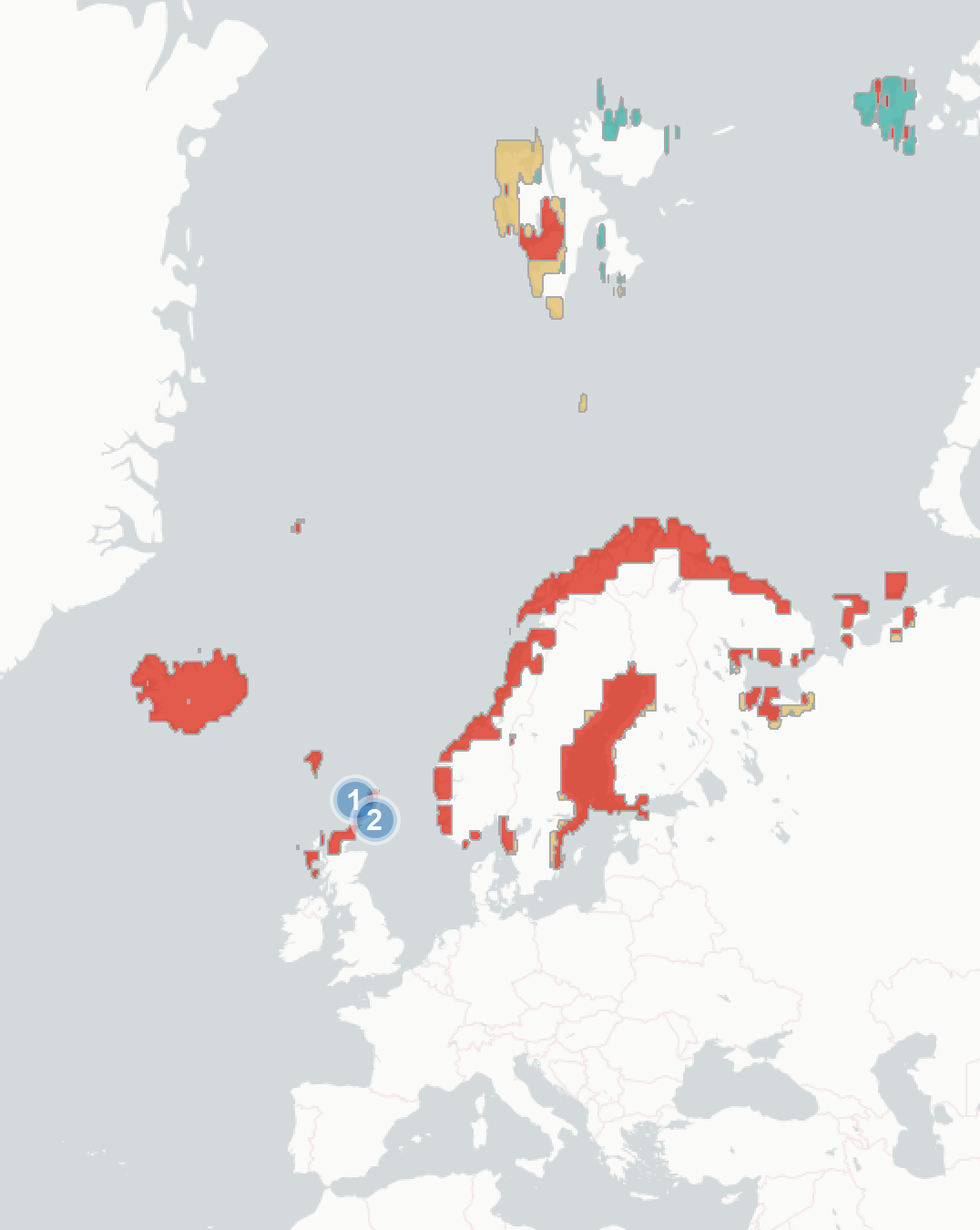Arctic Jaeger (Stercorarius parasiticus): vulnerability to climate change
Evidence for exposure
Potential changes in breeding habitat suitability:
-
Current breeding area that is likely to become less suitable (81% of current range)
-
Current breeding area that is likely to remain suitable (13%)
-
Current breeding area that is likely to become more suitable (6%)
Current impacts to Arctic Jaegers attributed to climate change:
-
Negative Impact: Changes in prey availability has led to declines in key seabird species that Arctic skuas parasitise, thus leading to population declines in skuas.
-
Negative Impact: Increased competition and predation from Great skuas, due to an increasing population size and prey swapping
Predicted changes in key prey species:
No key prey assessment was carried out for this species.
Sensitivity
-
While Arctic skuas parasitise a number of seabird species the breeding success of many populations is closely linked the abundance of key fish species. Severe decreases in Arctic skua populations have been linked to prey declines, and changes in fish distributions due to climate change are likely to have heavy impacts on populations.
-
Arctic skua populations are sensitive to predation, and several colonies have declined due to increased predation by great skuas and red foxes. Any changes in predator abundance or range due to climate change (e.g. the expansion of red foxes in Scandinavia) are likely to have impacts on skua populations. In addition, arctic skuas use co-operative defence which becomes less effective in smaller populations. This may result in a feedback loop where greater predation decreases population size, increasing vulnerability to predation.
-
This species has a long generation length (>10 years), which may slow recovery from severe impacts and increases population extinction risk
Adaptive capacity
-
In most parts of their range Arctic skuas are a numerous, long-lived, ecologically flexible species, so are likely to be robust to change.
-
In some areas, particularly near major seabird colonies, Arctic skuas have a quite restricted diet based on kleptoparasitism. However in many areas across their range they have a very varied diet, and will feed on the most available food, including birds, eggs, rodents, insects, fish, berries and carrion. This plasticity is likely to increase resilience to climate change.
-
There is considerable variation in migration route and wintering sites in Arctic skuas, even within a single colony. This will likely provide a buffer to climate change, as changes to any one wintering site are less likely to affect the population as a whole.
